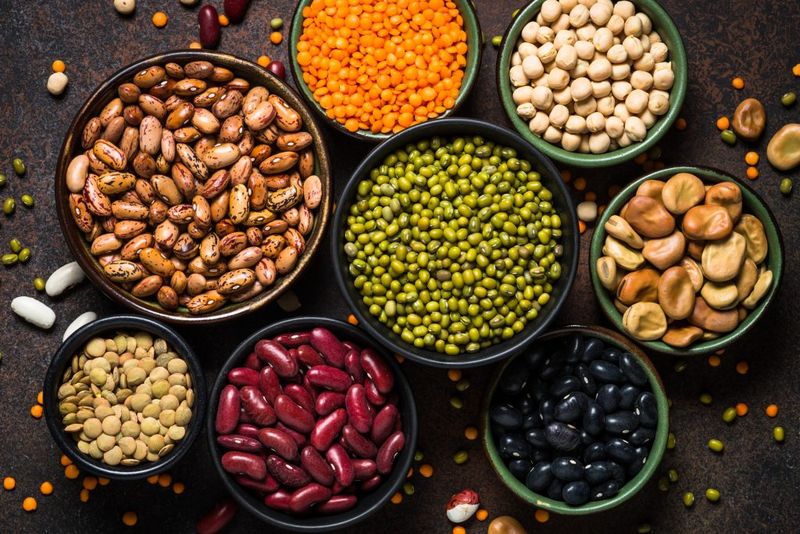World Pulses Day 2023 highlights how pulses are at the core of sustainability

Following the successful celebration of the International Year of Pulses in 2016, every 10 February the Food and Agriculture Organization of the United Nations (FAO) celebrates World Pulses Day.
This year’s theme “Pulses for a Sustainable Future” highlights how pulses — the edible seeds of leguminous plants such as beans, lentils, peas and chickpeas — are increasing the resilience of farming systems and improving lives thanks to their low water footprint, drought tolerance and resistance to climate related-disasters.
It also puts a spotlight on the global pulses sector, and how it can be a positive driver in ensuring the resilience of regional and global supply chains, enabling consumers to access nutritious foods, and contributing to the sustainable use of natural resources in the production of pulses.
“Pulses contribute in diverse ways towards the transformation of our agrifood systems, and can help us address multiple global crises,” says the FAO Director-General, QU Dongyu.
“Pulses can contribute to increasing the resilience of farming systems,” he added and “help to improve soil biodiversity, and are crucial components of multiple cropping systems.”
Indeed, as the world faces significant challenges to food and nutrition security, such as transboundary pests and diseases, conflicts, and the effects of climate change, pulses can be an important part of the response, as they are an affordable, nutrient-dense food that can be stored for a long time.
Pulses create economic opportunities for smallholder farmers as they typically offer higher profit margins than cereal grains.
They aid soil fertility due to their capacity to fix nitrogen from the air, and optimize the use of synthetic fertilizers, while combating the effects of climate shocks, such as droughts or heavy rainfall. When cereals are grown after pulses in agricultural cropping systems, they can yield 1.5 tonnes more per hectare than those in monocropping systems.
Moreover, they can help mitigate climate change by increasing the soil’s ability to store carbon and by restoring poor and degraded soils.
The contribution of pulses to healthy diets is not only limited to their high protein content – two to three times the amount found in cereal grains–, or the calories and essential micronutrients they provide, but also to being low in fat and high in fibre.
While beans, chickpeas and peas are the most well-known and commonly consumed types of pulses, there are several other lesser-known varieties from around the world such as vetches, lupins, and Bambara beans, all beneficial for food security, nutrition, health, climate change, and biodiversity.
As pulses support all dimensions of sustainability, including them in agrifood systems is key to achieving the Sustainable Development Goals (SDGs).
With the help of governments, the private sector, Members and partner organizations, the public, and youth, FAO facilitates and promotes the observance of this international day and supports the production and consumption of pulses as part of sustainable agrifood systems and healthy diets.
Since 2023 has been designated the International Year of Millets, FAO highlights that there are many linkages and synergies between pulses and millets.
Both pulses and millets contribute to food security and to diversified, nutritious and healthy diets, and have adapted to adverse climatic conditions, allowing them to grow on poor and marginal soils.
Combining millets and pulses through intercropping or crop rotation can boost sustainability and increase production and agrobiodiversity.
They can also be combined in several tasty and healthy dishes, such as millet congee, served with cooked pulses, like green lentils.
FAO marked World Pulses Day 2023 with a virtual global gathering on Friday, February 10, which featured opening remarks by the FAO Director-General.
The first keynote speaker Saadia Elmubarak Ahmed Daak, Alternate Permanent Representative of the Republic of the Sudan to FAO, explained that pulses are embedded in Sudanese cuisine culture and that many small-scale farmers choose to grow them because they require lower levels of fertilizer compared to other crops. She said Sudan is currently doing research on lentils, chickpeas and other pulses to produce high-yielding and climate resilient crops.
The second keynote speaker, Cindy Brown, President of the Global Pulse Confederation, urged participants to encourage the world to grow and eat more pulses. She noted how cultivating pulses will help to mitigate the effects of climate change, food insecurity and malnutrition and highlighted the importance of building and maintaining resilient global trade systems for pulses as part of ensuring a sustainable future.
The event also featured a video showcasing solutions that pulses provide, and the experience of four experts presenting case studies on the benefits pulses are offering in regions such as West Africa and Latin America, as well as specific countries including France and India.
Read also
Wheat in Southern Brazil Impacted by Dry Weather and Frosts
Oilseed Industry. Leaders and Strategies in the Times of a Great Change
Black Sea & Danube Region: Oilseed and Vegoil Markets Within Ongoing Transfor...
Serbia. The drought will cause extremely high losses for farmers this year
2023/24 Safrinha Corn in Brazil 91% Harvested
Write to us
Our manager will contact you soon



